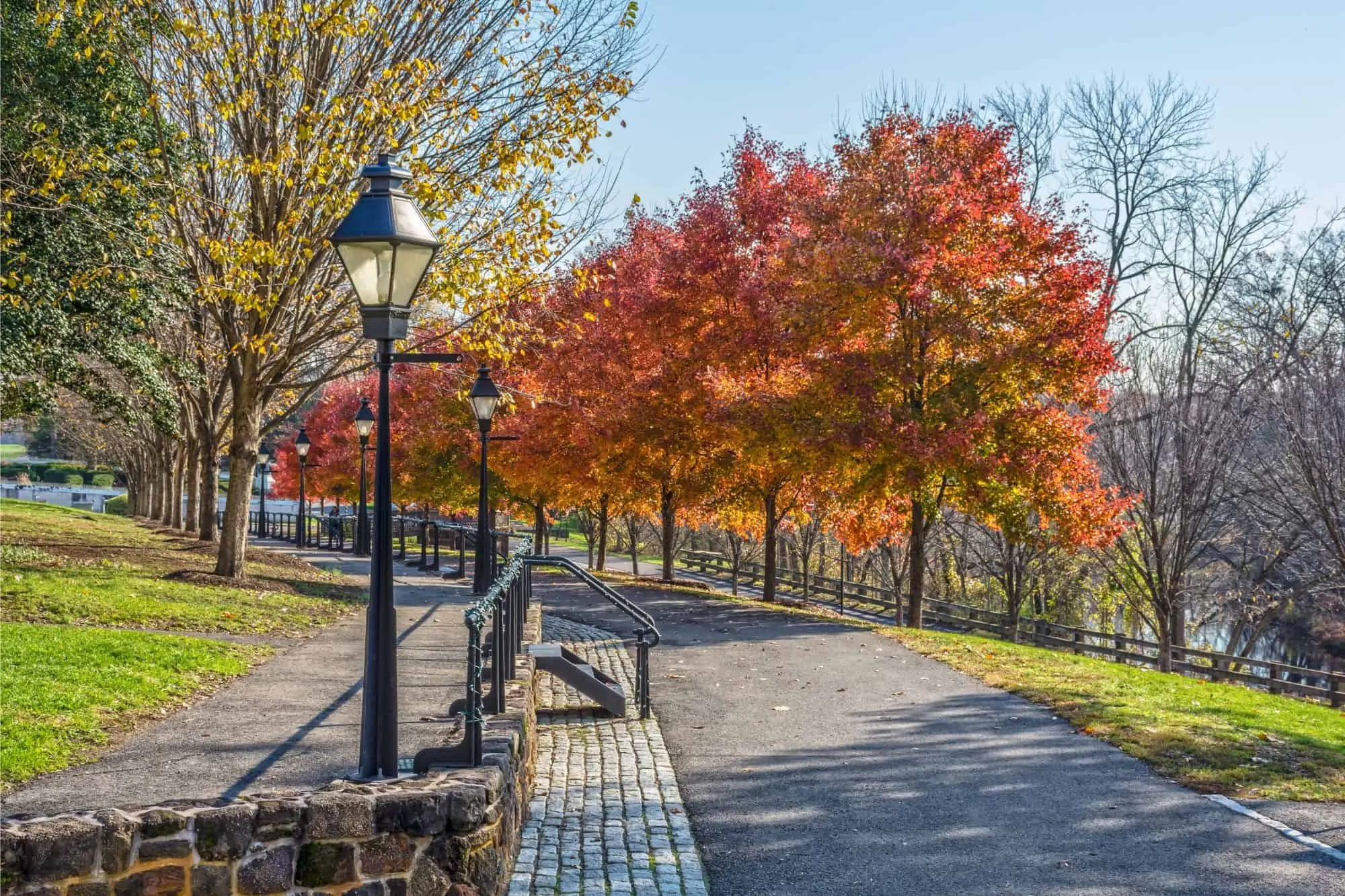Colonial era
The first European settlement in what is now Mount Holly began in 1677, when Walter Reeves acquired land from the Lenape (Delaware) Native Americans living in the area. He constructed a dam on Rancocas Creek to channel water through a raceway to power a grist mill and saw mill. Edward Gaskill and his sons hand dug the mill race on their property between 1720 and 1723. After the mills were established, more settlers were attracted to the area and built houses and commercial buildings on High, Church, White, Mill, and Pine streets, including the Shinn Curtis Log House (1712). By 1800, over 250 dwellings had been built.
Today no mills remain on the raceway, which still flows in its original course from the Rancocas just above the dam. The raceway proved a way for herring to make their way above the dam and was the scene of an annual fish run in the spring which provided fresh herring for slating and eating. The former mill land has been preserved as the Mill Dam Park. It marks the importance of mills to the early settlements.
Revolutionary War era
On December 17, 1776, Colonel Samuel Griffin of the Continental Army crossed the Delaware River with 600 men — mostly untrained men and boys, and with little equipment — and marched to Mount Holly, where he set up a few “3-pounder” artillery pieces on Iron Works Hill. Hessian commanders von Block and Carl von Donop, were told that there were 3,000 American troops at Mount Holly.
By December 23, 1776, 2,000 Hessians were moved from Bordentown and positioned at The Mount in Mount Holly, where they engaged in a three-day-long artillery exchange, known as the Battle of Iron Works Hill or Battle of Mount Holly, with the Americans on Iron Works Hill. The Americans slipped away that night.
After George Washington crossed the Delaware River on December 25, 1776, the fact that thousands of Hessian troops had been drawn to Mount Holly aided in the Continental Army’s success in the Battle of Trenton the next day, a surprising American victory that helped turn the Army’s fading morale after the disastrous defeat at the Battle of Fort Washington just weeks before and the ignominious retreat through New Jersey.
19th century
The 1793 state legislature approved the relocation of the Burlington County seat from Burlington City to Mount Holly, which was approved by voters in a 1796 referendum. Several important municipal buildings were constructed, including the courthouse in 1796 and the county prison built circa 1819. The Burlington County Prison was designed by Robert Mills, a nationally known architect who designed the Washington Monument. The town has numerous 18th and 19th-century buildings, most of which are included in the Mount Holly Historic District; it is listed in the New Jersey and National Register of Historic Places. Commercial buildings were constructed primarily along High Street.
In 1849, the Burlington and Mount Holly Railroad was established, connecting communities along the Delaware River to Philadelphia, the major city of the area. The railroad supported industrialization along its route. The Camden and Mount Holly Railroad constructed a station 20 years later near the intersection of Washington and King streets.
20th century
A trolley station was built in 1904 for the passengers making connections to Burlington City and Moorestown. New municipal buildings were constructed during the 20th century, including the Town Hall on Washington Street (1930) and the U.S. Post Office (1935) located across the street (1935), both federally funded and constructed as Works Progress Administration projects under President Franklin D. Roosevelt during the Great Depression.
In the late 1950s, Mount Holly began to have economic difficulties due to industrial restructuring and the loss of working-class jobs. In the post-World War II period, numerous blue collar, family wage jobs disappeared as the community’s traditional employers, the mills and dye factories, were shut down. At first these job losses were offset in part by gains at the nearby military bases, Fort Dix and McGuire Air Force Base, especially during the Vietnam War. In 1970, the residential vacancy rate in Mount Holly was 4.3%.
By 1980, however, the vacancy rate had climbed to 8.7% as a result of the nearby military installations’ downsizing after the end of the Vietnam War. During this same period, 1970–1980, shopping malls proliferated in the suburban Philadelphia area, and retail business in Mount Holly suffered.













